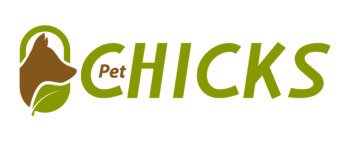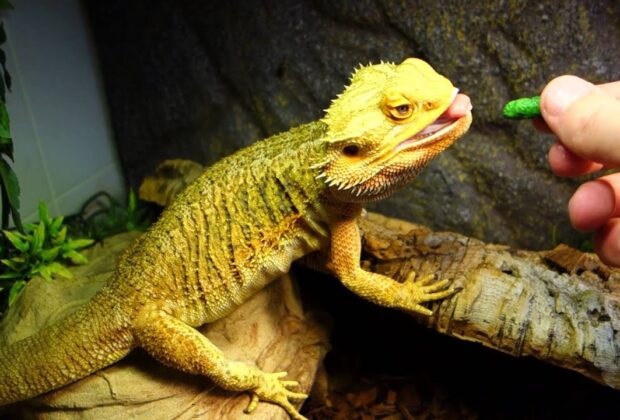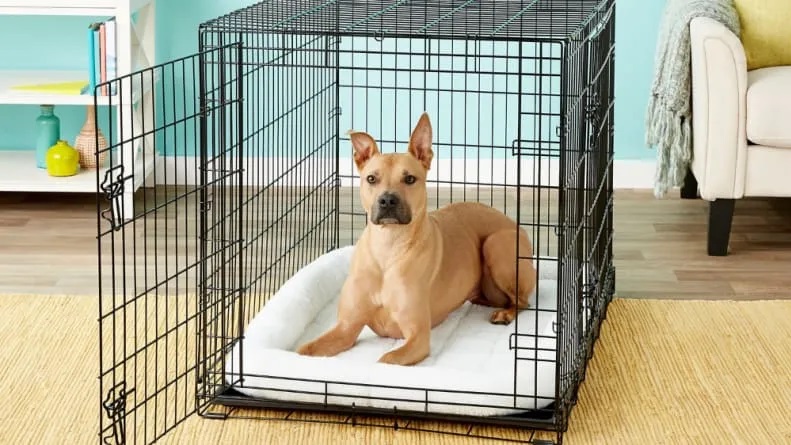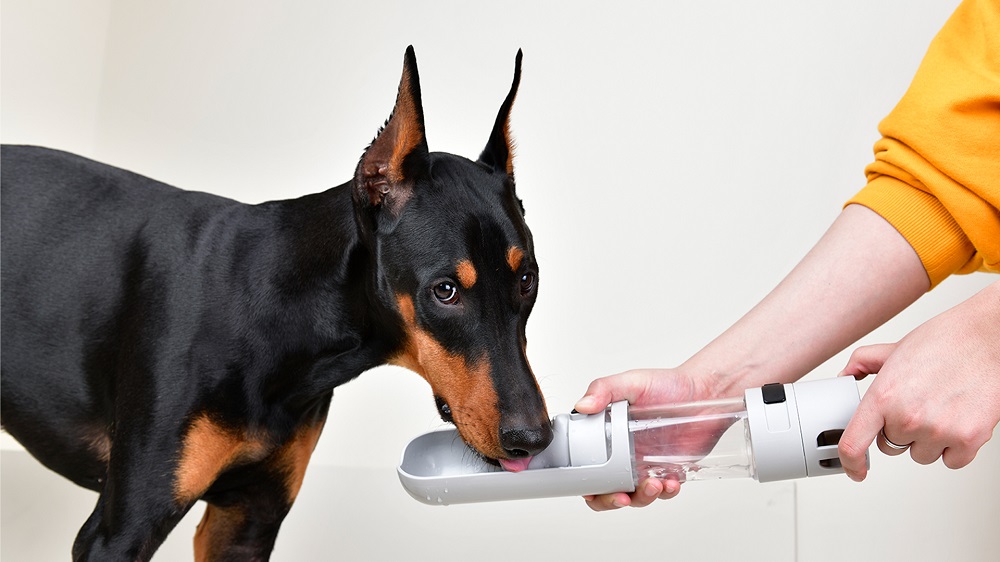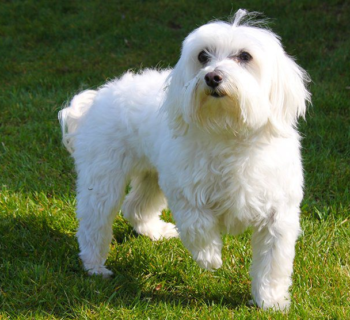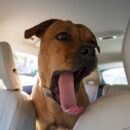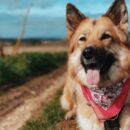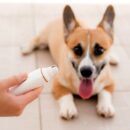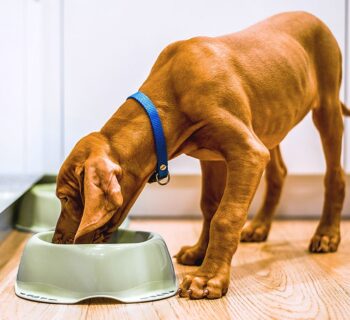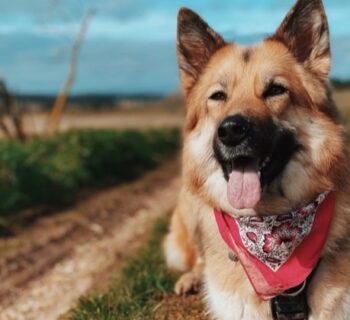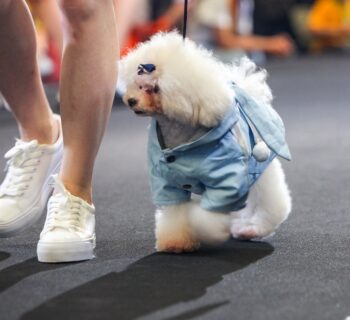If you're looking into adding a new member to your family, consider buying a bearded dragon. They come in all sizes -- from teeny tiny baby ones to big old guys -- but don't let size fool you. Beardies aren't slow crawlers by nature.
Bearded dragons are popular pets because they're relatively easy to care for thanks to their docile natures. Plus, their small stature makes them look like friendly little characters straight out of fantasy novels. If you've never seen a bearded dragon in person, now might be as good a time as ever to visit a local pet store or breeder where you'll see lots of these creatures firsthand.
This article was written with the assumption that you already own a bowl, water bottle and other supplies needed to keep your beardie happy and healthy, but we'll discuss those items below too. Now that you're ready to start caring for your new friend, let's move onto understanding its basic needs.
What do Bearded Dragons eat?
Bearded dragons are omnivores. They like to eat vegetables and fruit, but also meat and other proteins. When babies, they will eat primarily insects to assist with their growth. Most owners like to feed crickets but they can also have Dubia roaches.
In addition to insects, your baby beardie should be offered fresh leafy greens each day. They will not start eating greens regularly until they get to the juvenile stage.
As your Beaded Dragon enters adulthood, it's diet will switch from mostly insect to more vegetables and fruits. A bearded dragon's diet should include protein, greens, veggies, and fruits. They need to be fed a well-balanced diet in order to be healthy. Feed 25% insects, and 75% greens, vegetables, and fruits, as a balanced diet.
How often should I feed my Beardie?
Since most reptiles thrive better on a steady source of moisture, you shouldn't expect your beardie to gorge itself once every 24 hours. Rather, feed your bearded dragon twice every 24 hours -- once early morning and again late afternoon.
In addition to feeding, your beardie will need a clean water source. There are a variety of water bowls on the market, but it's worth noting that these reptiles can be messy drinkers, so it's best to buy a model with a large lip or guard around its opening.
Where does my bearded dragon sleep and hide during the day?
During the day, your beardie will retreat to warm spaces where it can relax. You may notice that your pet is more active in the morning than in the afternoon. This is because your beardie has to rest earlier in the morning than in the evening. Most owners find it's easier to keep their animals warm and comfortable in a heated tank -- a thermostat-controlled one especially -- that allows them to choose either hot or cool temperatures as they see fit.
You will want to provide a hide for your bearded dragon to escape the heat (or chilly winter cold) when it's time to rest. You can see some examples of hides and caves here. Make sure to put some spots in your enclosure that offer a good view of the outside and a safe entry/exit point.
Do I need anything Special for a Beardie Habitat?
If you bought a bearded dragon from an animal shop, chances are that the owner already sent home some special supplies so you can start caring for your new pet right away. The pet store owner should have sold you a thermometer, a water bowl, and a hide.
Thermometer: You'll need this to monitor your bearded dragon's temperature. There are thermometers designed specifically for reptiles, but if you're comfortable with the basics, you can try taking your beardie's temperature rectally or orally.
Bowl: Your bearded dragon will eat all its food in this bowl. It should be cleaned once every week or two.
Hide: Your lizard may hide in this during the day, or at least rest there when it gets a bit too warm. It will help regulate your pet's temperature.
Heat Bulb: You'll need this to keep your bearded dragon warm. Make sure that your pet is able to easily reach its basking rock after you install the bulb, as this is where your lizard will spend most of its time.
Tank: You should get a tank that's big enough for your beardie to stretch out and move around in. A 20 gallon aquarium will work for baby beardies but they will need a 50+ gallon tank when they are full grown.
UVB Light: This is another thing you will need to ensure that your pet is able to produce vitamin D3 in the proper quantity.
What about Temperature Control?
As an omnivore, bearded dragons prefer a habitat with a medium temperature of 80 to 85 degrees Fahrenheit. Be sure to take notice if he seems overly warm or cold, as it's important to establish a regimen of regularity for your pet's sake.
Common Feeding Mistakes
A common mistake for new owners is to leave their lizard in a small container for too long. Baby dragons need to be kept in a small container for a few days, but adults should be moved into larger tanks if they're outgrowing the ones they're already in.
Another serious issue that many owners face with bearded dragons is overfeeding. It's important to not overfeed your beard, as this can cause illness or even death.
You should not be feeding Juveniles mealworms as it can stunt their growth. This is due to depriving them of the nutrients they need to grow.
Finally, a common mistake many first-time owners make is Not Gut Loading. Gut-loading your bearded dragon's live insects at least a day before feeding is critical.
Before giving the insects to your bearded dragon, you should serve them fruits and vegetables that are high in nutrients. The amount of nutrition your bearded dragon receives after this procedure is completed is significantly increased.
Conclusion
Bearded dragons are a popular choice for pet lovers because of their docile temperament. They're known to be charming and delightful pets, making them an excellent choice for kids and adults alike. As long as you provide a good environment and food that is properly nutritionally balanced, your dragon is sure to live a long life.
